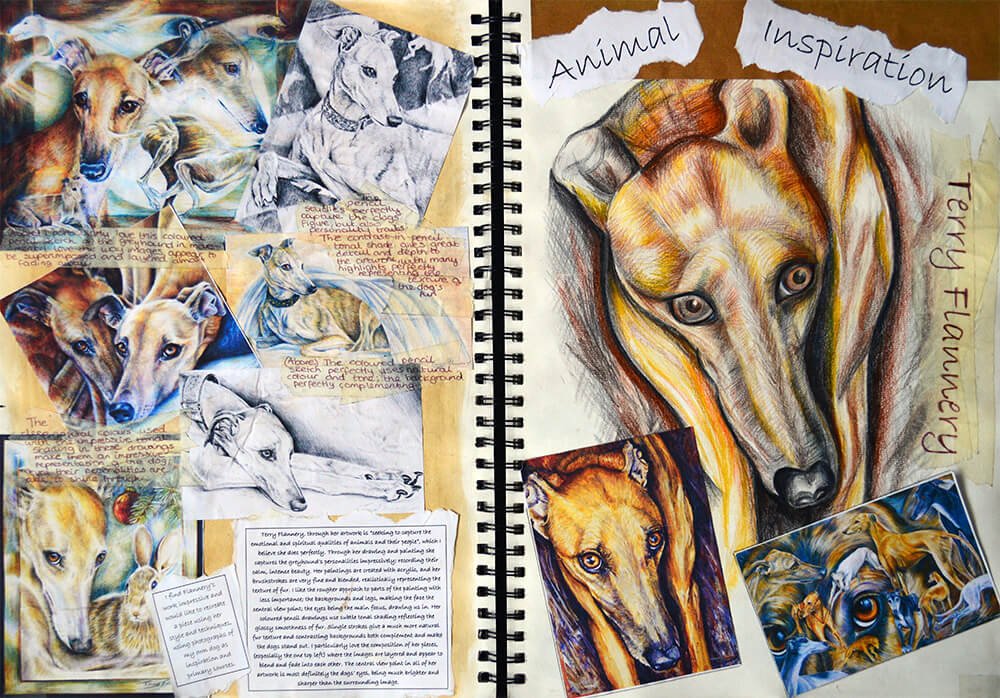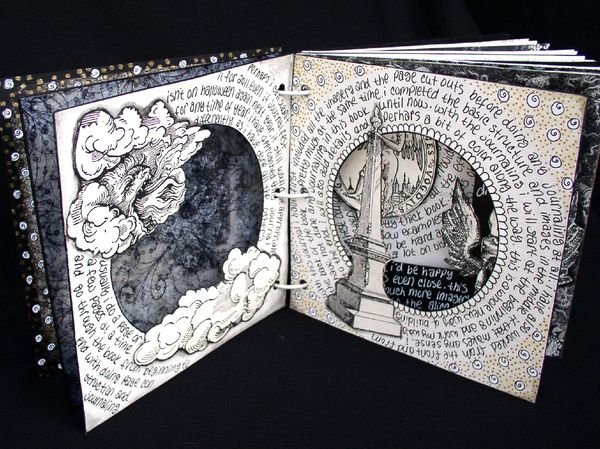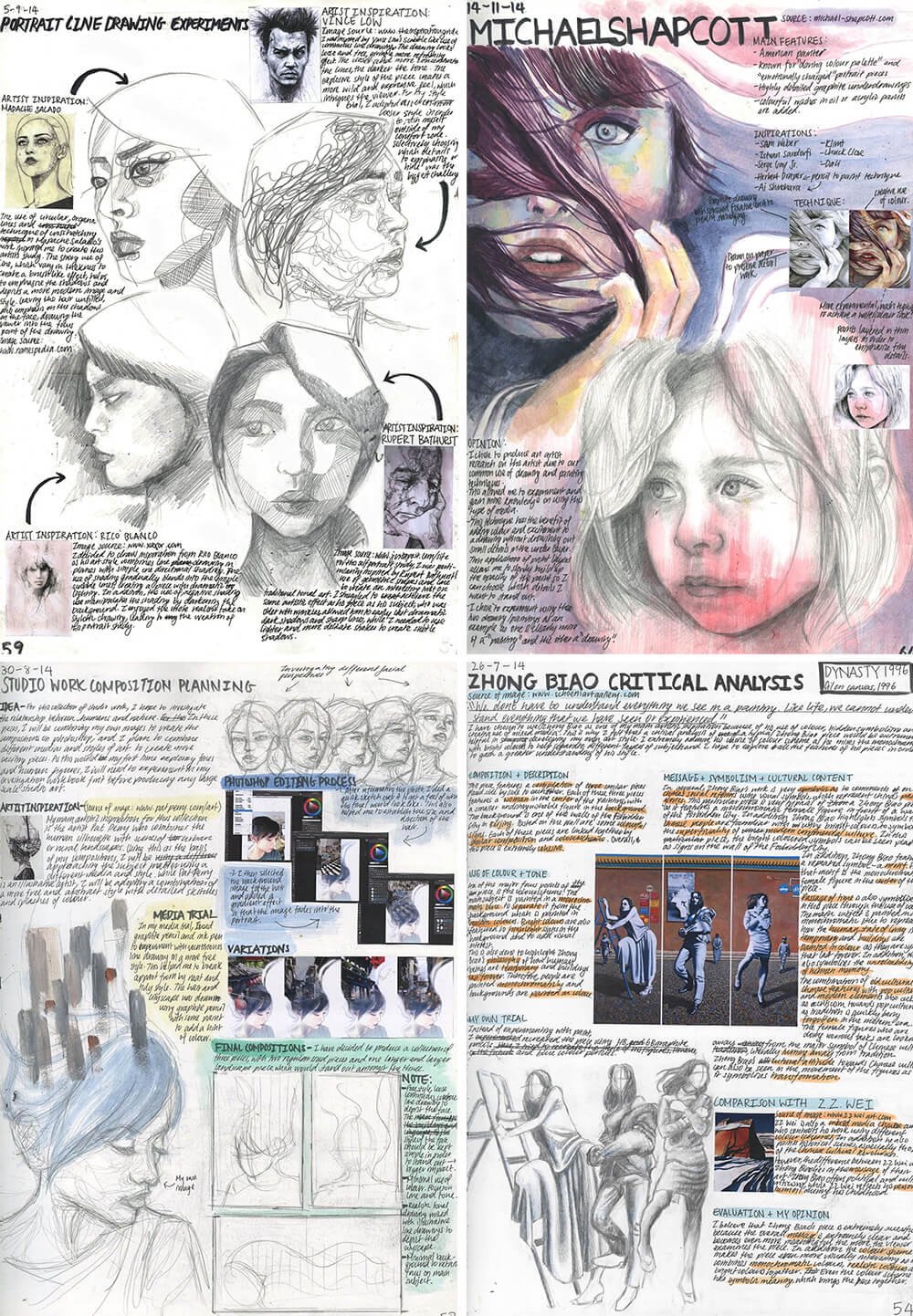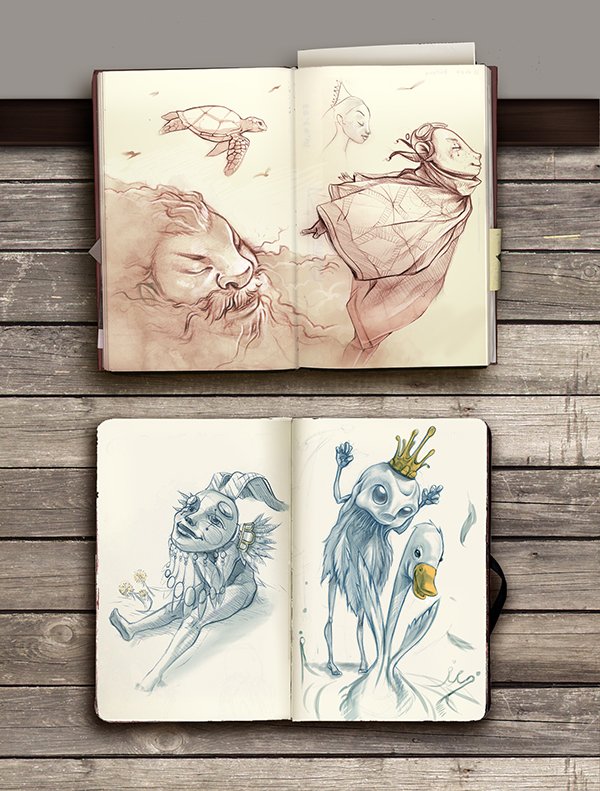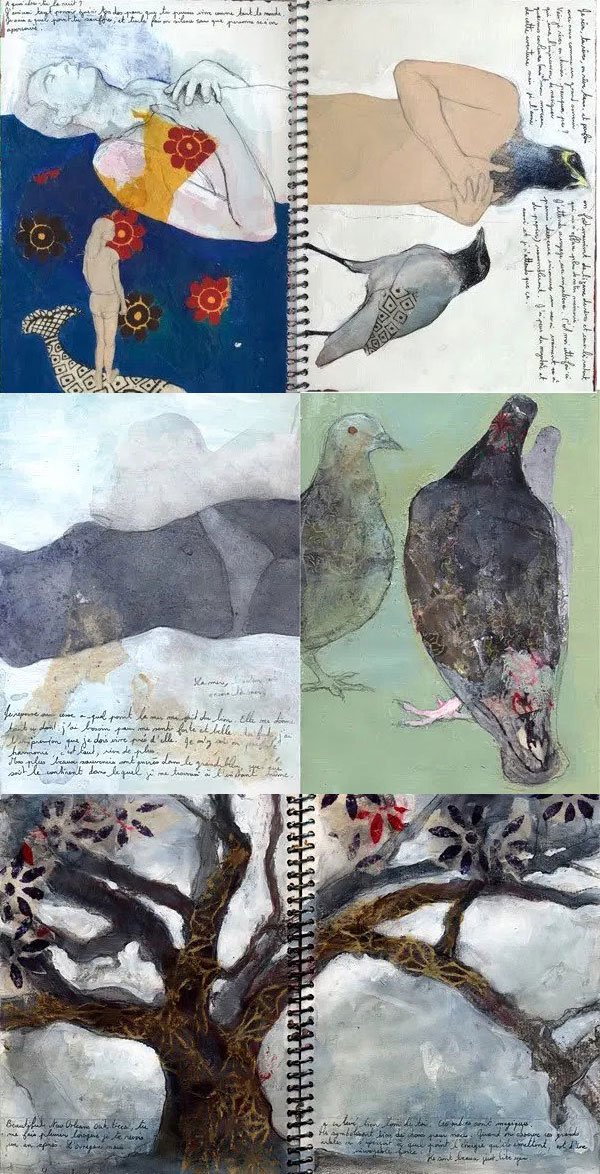+ WHAT IS IT?
A COLLECTION OF IDEAS..... Why create a sketchbook? Traditionally the term ‘sketchbook’ referred to a portable drawing pad used to capture visual information, compositions and colours; The contemporary art school definition is often broader than that. It is a collection of ideas which ultimately form a ‘library of possibilities’. This library exists primarily for the artist to be able to refer back to concepts and information when creating new work. The book is not a precious work of art in itself and so can be treated in a very free, playful, individual, expressive and spontaneous manner.
A VIEW INTO YOUR CREATIVE MIND..... Your sketchbook is a record of inspiration and experiments. It is like a view into your creative mind which shows what you are looking at and how you are responding to it. This includes colour, texture, proportion, techniques, others artists and designers, drawings, painted sketches, material samples, internet downloads, book and magazine cuttings……anything which is inspiring you and moving you forward. You should be adding to, and referring to, this book throughout a project.
ASPIRATIONAL RATHER THAN REFLECTIVE..... It is different from a "learning log" because it is not focussed on what you have done; It is about what you could do based on what you have seen and recorded.
IT DOES NOT NEED TO BE A BOOK..... Remember also it does not need to be a book bought in a shop or produced in a particular format. I prefer to gather loose sheets of information and then compile them but everyone finds their own method. I also like to work back into earlier pages as I discover new information. Think about the quality of the paper and consider adding your own. Drawings can be compromised by stark, white cartridge paper. Consider the background colour and texture of your drawings and paintings as a fundamental element of the artwork. Equally if a drawing does not fit onto a page don’t let the borders limit you – just extend the page. If you don’t like a drawing just keep working over it until you have moulded it into something interesting – removing and covering marks is as important as adding them.
CROSS REFERENCING..... I believe the key to a good sketchbook is cross referencing – looking for common themes – lots of different elements on a page which relate and form new possibilities. Show how you have looked at an artist or designer and then reinterpreted their style or technique in your own way. Throughout history creative people have developed their own work by looking at, and responding to, the work of others. Oh, and if the book you end up with is not flat – if it is bulging and exploding with work – don’t worry, the chances are you have worked hard and created a dynamic collection of ideas.
+ TIPS AND TECHNIQUES
USE MIXED MEDIA: Try to use many different techniques. If you plan on using "wet" media, make sure your sketchbook is for use with mixed media and is heavyweight paper (more than 100 lb). You can use prismacolor pencils, paint, ball point, micron, paint, watercolor or gouache, highlighter or colored markers (copic, tombow, etc).
CONSIDER THE SPREAD: Consider how your sketchbook entries look as a continuous spread with the book open. Instead of 2 individual pages, design with the spread in mind. A single image can span both pages of a spread. Written words can continue to the next page.
ADD THINGS IN: In addition to the page itself, consider adding other elements of drawn or painted art, clippings from other sources (magazines or print outs of elements found on the internet, pieces of famous art). You can even strategically use fabric, yarn, or other materials as long as it adds something to the content.
MAKE YOUR OWN BOOK: A sketchbook doesn't always have to be a ready-made, store-bought artist sketchbook. You can create your own using creative binding.
CREATIVE IDEAS
- Fold-outs: not enough room on the page? add additional space with fold outs.
- Pop-ups: just like in the old pop-up books.
- Using post-it notes, washi tape, tracing paper or vellum elements
- Using specialty papers as add-ins. This might include faux gold foil, marbelized paper, or other handmade papers. These can be mod-podged onto a sketchbook page.
- Burning / tearing / revealing: any of these methods can create interesting effects. Just be careful with the burning method LOL. Revealing is when a page on top has been torn or cut out to reveal writing, a part of an image or color below. In this sense it is an intreguing method that creates a combined image from separate pages.
+ BEST STORE-BOUGHT SKETCHBOOKS
HANDBOOK JOURNAL COMPANY SKETCHBOOK- 130GSM
HANDBOOK JOURNAL CO. WATERCOLOR SKETCHBOOK- 140LB/300GSM
STILLMAN & BIRN BETA SERIES SKETCHBOOK- 270GSM
CANSON 100510926 XL MIXED MEDIA SKETCHBOOK
FOR A MORE THOROUGH REVIEW, CLICK HERE





